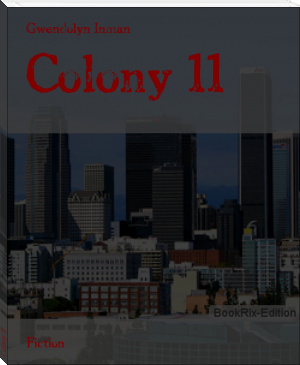Hudson Bay, R. M. Ballantyne [read full novel TXT] 📗

- Author: R. M. Ballantyne
Book online «Hudson Bay, R. M. Ballantyne [read full novel TXT] 📗». Author R. M. Ballantyne
The number of castors that an Indian makes in a winter hunt varies from fifty to two hundred, according to his perseverance and activity, and the part of the country in which he hunts. The largest amount I ever heard of was made by a man called Piaquata-Kiscum, who brought in furs on one occasion to the value of two hundred and sixty castors. The poor fellow was soon afterwards poisoned by his relatives, who were jealous of his superior abilities as a hunter, and envious of the favour shown him by the white men.
After the furs are collected in spring at all the different outposts, they are packed in conveniently-sized bales, and forwarded, by means of boats and canoes, to the three chief depôts on the sea-coast—namely, Fort Vancouver, at the mouth of the Columbia River, on the shores of the Pacific; York Fort, on the shores of Hudson Bay; and Moose Factory, on the shores of James Bay—whence they are transported in the Company’s ships to England. The whole country in summer is, consequently, in commotion with the passing and repassing of brigades of boats laden with bales of merchandise and furs; the still waters of the lakes and rivers are rippled by the paddle and the oar; and the long-silent echoes which have slumbered in the icy embrace of a dreary winter, are now once more awakened by the merry voice and tuneful song of the hardy voyageur.
This slight sketch of the Hudson Bay Company and of the territories occupied by them may, for the present, serve to give some idea of the nature of the service and the appearance of the country. We shall now proceed to write of the Indiana inhabiting these wild regions.
(Doubtless the reader is aware that the chartered rights of the Hudson Bay Company now (1875) no longer exist; nevertheless their operations are still conducted in the same manner as of old, so that the above description is applicable in almost all respects to the greater part of the country at the present time.)
The aborigines of North America are divided into a great number of nations or tribes, differing not only in outward appearance but also in customs and modes of life, and in some instances entertaining for each other a bitter and implacable hatred.
To describe the leading peculiarities of some of these tribes, particularly those called Crees, will be my object in the present chapter.
Some of the tribes are known by the following names:— Crees, Seauteaux, Stone Indians, Sioux, Blackfeet, Chipewyans, Slave Indians, Crows, Flatheads, etcetera. Of these, the Crees are the quietest and most inoffensive; they inhabit the woody country surrounding Hudson Bay; dwell in tents; never go to war; and spend their time in trapping, shooting, and fishing. The Seauteaux are similar to the Crees in many respects, and inhabit the country further in the interior. The Stone Indians, Sioux, Blackfeet, Slave Indians, Crows, and Flatheads inhabit the vast plains and forests in the interior of America, on the east and west of the Rocky Mountains, and live chiefly by the produce of the chase. Their country swarms with bisons, and varieties of deer, bears, etcetera, which they hunt, shoot, snare, and kill in various ways. Some of these tribes are well supplied with horses, with which they hunt the buffalo. This is a wild, inspiriting chase, and the natives are very fond of it. They use the gun a good deal, but prefer the bow and arrow (in the use of which they are very expert) for the chase, and reserve the gun for warfare,—many of them being constantly engaged in skirmishing with their enemies. As the Crees were the Indians with whom I had the most intercourse, I shall endeavour to describe my old friends more at length.
The personal appearance of the men of this tribe is not bad. Although they have not the bold, daring carriage of the wilder tribes, yet they have active-looking figures, intelligent countenances, and a peculiar brightness in their dark eyes, which, from a constant habit of looking around them while travelling through the woods, are seldom for a moment at rest. Their jet-black hair generally hangs in straight matted locks over their shoulders, sometimes ornamented with beads and pieces of metal, and occasionally with a few partridge feathers; but they seldom wear a hat or cap of any kind, except in winter, when they make clumsy imitations of foraging-caps with furs—preferring, if the weather be warm, to go about without any head-dress at all; or, if it be cold, using the large hood of their capotes as a covering. They are thin, wiry men, not generally very muscular in their proportions, but yet capable of enduring great fatigue. Their average height is about five feet five inches; and one rarely meets with individuals varying much from this average, nor with deformed people, among them. The step of a Cree Indian is much longer than that of a European; owing, probably, to his being so much accustomed to walking through swamps and forests, where it is necessary to take long strides. This peculiarity becomes apparent when an Indian arrives at a fort, and walks along the hard ground inside the walls with the trader, whose short, bustling, active step contrasts oddly with the long, solemn, ostrich-like stride of the savage; which, however appropriate in the woods, is certainly strange and ungraceful on a good road.
The summer dress of the Indian is almost entirely provided for him by the Hudson Bay Company. It consists chiefly of a blue or grey cloth, or else a blanket capote reaching below the knee, made much too loose for the figure, and strapped round the waist with a scarlet or crimson worsted belt. A very coarse blue striped cotton shirt is all the underclothing they wear, holding trousers to be quite superfluous; in lieu of which they make leggins of various kinds of cloth, which reach from a few inches above the knee down to the ankle. These leggins are sometimes very tastefully decorated with bead-work, particularly those of the women, and are provided with flaps or wings on either side.
The costume, however, is slightly varied in winter. The blanket or cloth capote is then laid aside for one of smoked red-deer skin, which has very much the appearance of chamois leather. This is lined with flannel, or some other thick, warm substance, and edged with fur (more for ornament, however, than warmth) of different kinds. Fingerless mittens, with a place for the thumb, are also adopted; and shoes or moccasins of the same soft material. The moccasins are very beautiful, fitting the feet as tightly as a glove, and are tastefully ornamented with dyed porcupine quills and silk thread of various colours, at which work the women are particularly au fait. As the leather of the moccasin is very thin (see note 1), blanket and flannel socks are worn underneath—one, two, or even four pairs, according to the degree of cold; and in proportion as these socks are increased in number, the moccasin, of course, loses its elegant appearance.
The Indian women are not so good-looking as the men. They have an awkward, slouching gait, and a downcast look—arising, probably, from the rude treatment they experience from their husbands; for the North American Indians, like all other savages, make complete drudges of their women, obliging them to do all the laborious and dirty work, while they reserve the pleasures of the chase for themselves. Their features are sometimes good; but I never saw a really pretty woman among the Crees. Their colour, as well as that of the men, is a dingy brown, which, together with their extreme filthiness, renders them anything but attractive. They are, however, quiet, sweet-tempered, and inoffensive creatures, destitute as well of artificial manners as of stays. Their dress is a gown, made without sleeves, and very scanty in the skirt, of coarse blue or green cloth; it reaches down to a little under the knee, below which their limbs are cased in leggins beautifully ornamented. Their whole costume, however, like that of the men, is almost always hid from sight by a thick blanket, without which the Indian seldom ventures abroad. The women usually make the top of the blanket answer the purpose of a head-dress; but when they wish to appear very much to advantage, they put on a cap. It is a square piece of blue cloth, profusely decorated with different-coloured beads, and merely sewed up at the top. They wear their hair in long straggling locks, which have not the slightest tendency to curl, and occasionally in queues or pigtails behind; but in this respect, as in every other, they are very careless of their personal appearance.
These primitive children of the forest live in tents of deerskin or bark; and sometimes, where skins are scarce, of branches of trees. They are conically shaped, and are constructed thus:— The Indian with his family (probably two wives and three or four children) arrives in his bark canoe at a pretty level spot, sheltered from the north wind, and conveniently situated on the banks of a small stream, where the fish are plentiful, and pine branches (or brush), for the floor of the tent, abundant. Here he runs his canoe ashore, and carries his goods and chattels up the bank. His first business is to cut a number of long poles, and tie three of them at the top, spreading them out in the form of a tripod. He then piles all the other poles round these, at half a foot distance from each other, and thus encloses a circle of between fifteen and twenty feet in diameter. Over the poles (if he is a good hunter, and has plenty of deer-skins) he spreads the skin tent, leaving an opening at the top for the egress of the smoke. If the tent be a birch-bark one, he has it in separate rolls, which are spread over the poles till the whole is covered. A small opening is left facing the river or lake, which serves for a doorway; and this is covered with an old blanket, a piece of deer-skin, or, in some instances, by bison-skin or buffalo robe. The floor is covered with a layer of small pine branches, which serve for carpet and mattress; and in the centre is placed the wood fire, which, when blazing brightly, gives a warmth and comfort to the slight habitation that could scarcely be believed. Here the Indian spends a few days or weeks, according to the amount of game in the vicinity, and then removes to some other place, carrying with





Comments (0)